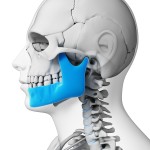
Temporomandibular disorders (TMD) are a group of conditions affecting the temporomandibular joints (TMJ), the jaw muscles and/or related structures. They are relatively common affecting an estimated 12-65% of the population. The biopsychosocial model of TMD is now favoured by oro-facial pain experts and the relationship between dental occlusion and TMD is still a source of controversy
The aim of this review was to assess whether here any association between features of dental occlusion and temporomandibular disorders
Methods
Searches were conducted in the Medline, Scopus and Google Scholar databases for English language studies in adults assessing the association between temporomandibular disorders (e.g., signs, symptoms, specific diagnoses) and features of dental occlusion. Study selection was conducted independently by two reviewers with study quality being assessed based on the Newcastle-Ottawa Scale (NOS). No meta-analysis was conducted.
Results
- 25 studies (17 case-control, 8 comparative) were included.
- Occlusal features and TMD diagnosis in studies showed high variability.
- Findings were consistent with a lack of clinically relevant association between TMD and dental occlusion.
- Only 2 studies were associated with TMD in the majority (≥50%) of single variable analyses in patient populations.
- Only mediotrusive interferences are associated with TMD in the majority of multiple variable analyses.
Conclusions
The authors concluded: –
Based on findings, which support the absence of a disease-specific association, there is no ground to hypothesise a major role for dental occlusion in the pathophysiology of TMDs. Dental clinicians are thus encouraged to move forward and abandon the old-fashioned gnathological paradigm.
Comments
While 3 databases were searched for this review restricting the inclusion to English language article only may have resulted in missing some relevant studies. This review finds that with the exception of two studies no associations were associated with TMD. The authors go on to point out that one would anticipate a much greater association between dental occlusal problems and TMD if it was of clinical importance. They also highlight in their discussion that the reported frequencies of occlusal disharmonies are present at the same frequencies in non-TMD patients. As a result, their logical argument for a move away from the traditional gnathological approach to TMD management.
Links
Primary paper
Manfredini D, Lombardo L, Siciliani G. Temporomandibular disorders and dental occlusion. A systematic review of association studies: end of an era? J Oral Rehabil. 2017 Jun 10. doi: 10.1111/joor.12531. [Epub ahead of print] Review. PubMed PMID: 28600812.
Other references
Dental Elf – 14th May 2014
Dental Elf – 2nd Dec 2013
Is there an association between head and neck posture and temporomandibular disorders?

The role of occlusion in the development of signs and symptoms of TMD continues to be a source of controversy. There has even been a movement within dentistry over the past few decades to minimize the role of occlusion in TMD and to de-emphasize the study of occlusion in dental education. However, this review of the current literature specifies that, despite the fact that the etiology of TMD is probably multifactorial, completely discounting the role of occlusion may be an inappropriate interpretation of published data.
Cordray, Frank E.. 2017. The Relationship between Occlusion and TMD. Open Journal of Stomatology 07: 35-80. doi: 10.4236/ojst.2017.71003.
http://www.scirp.org/journal/PaperInformation.aspx?paperID=73341
While I would agree that this review downplays the role of occlusion in TMD. I think that it is wrong to suggest that it completely discounts a role for occlusion. As the authors clearly state ” there is no ground to hypothesise a major role in the pathophysiology of TMDs’
Next step is now to develop appropriate decision-aids and evidence-based Patient information materials using risk-communication techniques in order to COMMUNICATE CORRECTLY the findings of such studies in to the patients.
Congratulations to the authors and Derek for the work!
Until the microscope was invented, the presence of germs was unknown, and people could not know the relationship between disease and bacteria.
When measuring the occlusal state of a tooth, the unit of length is in microns and the occlusal state can not be measured in millimeters.
I am a dentist and I have been witnessing the disappearance of the jaw joint disorder for 30 years by restoring the occlusal induction occlusion by restructuring the occlusion and the occlusion and the jaw joint are closely related.
While you have had good outcomes for TMD with your patients the experience of individual practitioners is not high-quality evidence. What the review by Manfredini demonstrates is that this is little or no evidence of a consistent relationship between TMD and occlusion. However the quality of the evidence is not high so high quality well-conducted studies are needed preferably using common outcome sets so that combining the results in reviews in the future is more straightforward.